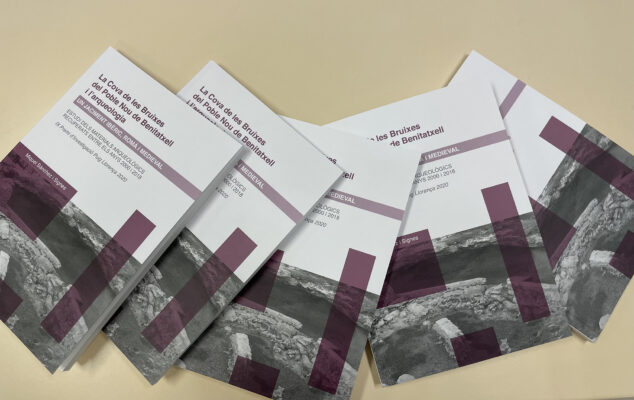The archaeologist Miquel Sánchez Signes, PhD in History from the University of Valencia, has presented the results of the excavations carried out between 2000 and 2018 in the book The Cova de les Bruixes of Poble Nou de Benitatxell and the archeology. This site, located in El Poble Nou de Benitatxell, has become a true treasure for archaeology, housing vestiges of an extremely rich and fascinating history.
According to Sánchez Signes, the Cova de les Bruixes is a place where "there is still much to discover". The book offers a detailed look at this impressive archaeological site, spanning from Iberian to Roman to Medieval times. Those interested in immersing themselves in this exciting study can purchase the book at the Municipal Library at a price of 15 euros.
This is the winning work of the IX Puig Llorença Research Award, the first to see the light and materialize in a book after recovering this important award in 2020 after 12 years without being summoned. In it, Sánchez Signes collects the study of the materials recovered at the site between 2000 and 2018, as well as the results of the excavations that he co-directed, together with Josep Ahuir and Anna Viciach, in different stages, between 2015 and 2018.
a recent discovery
The Cova de les Bruixes site was discovered in 2000, when the Los Molinos urbanization began to be built. Then, during the works, many archaeological materials began to appear and it was decided to carry out an excavation campaign. In it, as in the second campaign of 2001, there are structures, walls, remains of tableware, amphorae and other materials that today are kept in the Soler Blasco Archaeological and Ethnological Museum of Xàbia.
After these two campaigns, the works are paralyzed and the construction of the urbanization continues its course without any type of archaeological control. It was not until 2015 when Miquel Sánchez Signes became interested in the site and began a new campaign financed by the City Council of El Poble Nou de Benitatxell to answer the questions that arose from the first excavations and try to date all the materials.
Tools and settlements of the Cova de les Bruixes
According to the archaeologist in the presentation of the book that took place at the Social Center, "at first the work was hard and not very rewarding because nothing appeared in the 2016 campaign." Even so, it was decided to continue in 2017 and 2018, and, this time, the results were magnificent and gave a lot of information about the different settlements that have passed through the Cova de les Bruixes over the centuries.
One of the most important elements found in the vicinity of the studied plot was a Roman press dating from the XNUMXrd century AD, specifically a torcularium counterweight stone. The piece was at the base of a hundred-year-old terrace, where it was possibly placed to take advantage of its enormous dimensions as a point of support. The two notches on the front were used to anchor some wood in the process of pressing oil or wine.
Numerous silos from the Andalusian period dated between the XNUMXth and XNUMXth centuries that would have been used to store grain and that are known to have later been used as landfills, since remains of broken dishes and utensils were found, as well as the skeleton of a goat.
Furthermore, the different elements found confirm that different settlements would have passed through the site that would cover all chronologies: very simple domestic pieces appeared from the Iberian period; from Roman times, amphorae that were used to import solid and liquid foods throughout the Mediterranean; From the Andalusian period there are ceramic pieces that are even known to have come from an important pottery that existed at the time on Teulada Avenue in Dénia; and from the Christian settlement some plates and glasses.










